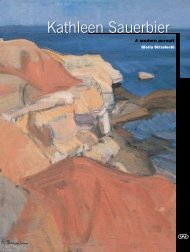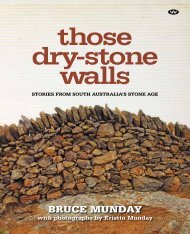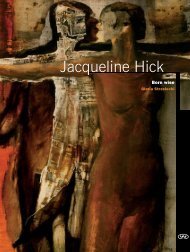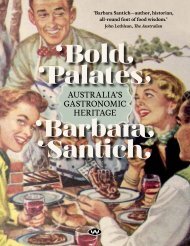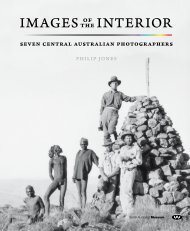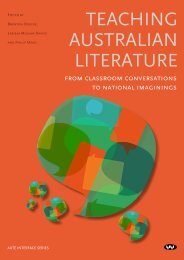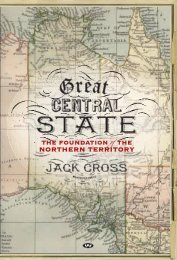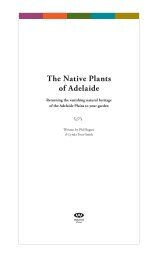ROBERT FOSTER AND AMANDA NETTELBECK - Wakefield Press
ROBERT FOSTER AND AMANDA NETTELBECK - Wakefield Press
ROBERT FOSTER AND AMANDA NETTELBECK - Wakefield Press
Create successful ePaper yourself
Turn your PDF publications into a flip-book with our unique Google optimized e-Paper software.
Introduction7land within South Australia’s current northern borders were reached; fromthat time to the end of the nineteenth century, the patterns by which theCentral Australian frontier evolved would prove to be relentlessly repetitiveof those that had emerged between the 1840s and the 1870s further south. 32The frontier phase in most regions was typically characterised byAboriginal resistance to the invasion of their lands, which took the form ofattacks on settlers, their stock and their property. Aboriginal resistance wasmet in turn by an assertion of European force designed to suppress that resistance.As Henry Reynolds has argued in regard to Aboriginal sovereignty, akey characteristic of the Australian frontier – one that proved to be as trueof South Australia as of Australia’s earlier colonies – was the uncertainty ofBritain’s effective occupation: if a rule of government ‘extends as far as … itsadministrative machinery is in efficient exercise’, then in Australia, Britishsovereignty was only of ‘a qualified and limited order’. 33 In this respect thefrontier phase, as Julie Evans has argued, highlights the ‘unsuitability’ of therule of law, which remained insecure until such a time as the Aboriginalpeoples it purported to protect had been dispossessed. 34 Tom Griffiths hasmade a similar point somewhat more bluntly: it was in the very nature of thefrontier ‘to undermine the rule of law and the legal method’. 35Remembering the frontierThe question of whether and how a rule of law operated on Australia’sfrontiers has been central to recent critiques of frontier historiography. In hiscontroversial book The Fabrication of Aboriginal History, Keith Windschuttleargued that, with some notable exceptions, most of the violence of Australia’sfrontiers occurred in the context of legitimate police actions; colonial authoritieswere dealing with Aboriginal criminality, not warfare. The ideal of therule of law, which assumed that Aboriginal peoples would be protected andif need be punished as British subjects, was certainly central in the thoughtsof British policy-makers at the same time the colony of South Australia wasbeing planned, but how did it translate into practice? A close examinationof how the settler frontier evolved ‘on the ground’ and how it was policedsuggests that not only was the rule of law an ideal impossible to implementbut that, perversely, the often genuine attempts to impose it underminedits effectiveness by diminishing settlers’ faith in its capacity to protect theirinterests, and encouraging their own forms of ‘frontier justice’. 36This question is critical to the issue of how frontier conflict betweenAboriginal people and Europeans has been recorded and remembered.In 1968 W.E.H. Stanner famously observed the remarkable absence of



